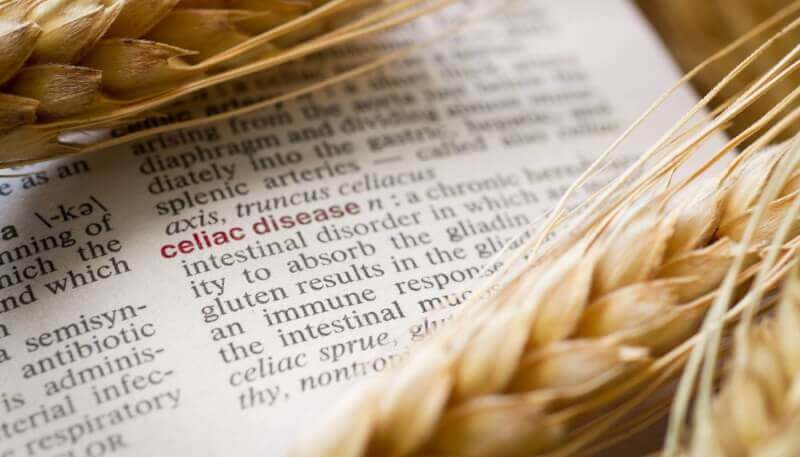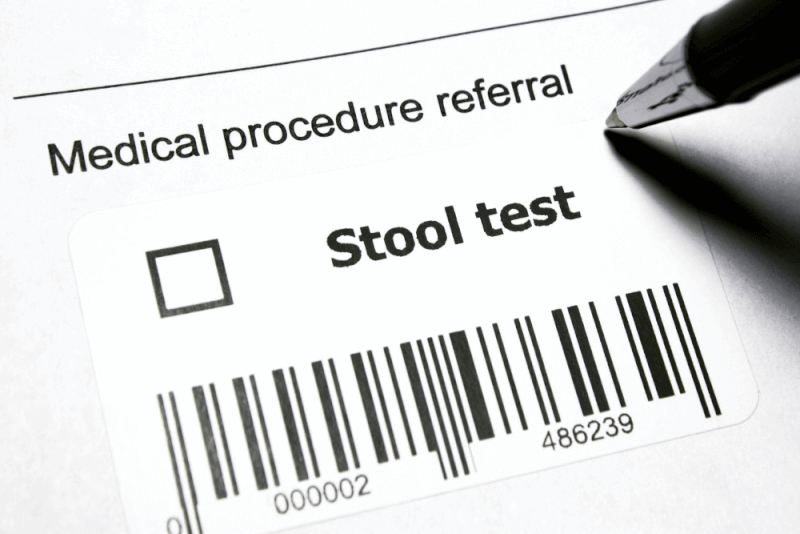30-Second Summary
- Celiac disease is a genetic disorder caused by the immune system's sensitivity to gluten.
- Gluten is a protein found in grains such as wheat, barley, rye, and oats.
- When people with celiac disease consume gluten-containing foods, it damages their small intestines.
- This damage makes it difficult to absorb nutrients and can lead to various health problems.
Celiac disease, an immune system disorder, arises due to sensitivity to gluten found in foods. It can occur at any age but is more common in children with a family history of celiac disease.
What is Celiac Disease?
Our immune system produces antibodies to remove pathogens such as viruses and bacteria from the body. This helps protect the body. However, in some individuals, antibodies are produced against substances that are not harmful, and sometimes even beneficial.
In celiac disease, these antibodies are produced against a protein called gluten. Therefore, when patients consume foods containing gluten, the antibodies produced by the body cause celiac disease to develop in the small intestines.
In celiac disease, the layer in the small intestine responsible for nutrient absorption is damaged. These changes in the intestinal mucosa reduce the absorption of nutrients, particularly important substances such as folic acid and iron.
Celiac Disease in Babies
Symptoms of celiac disease can appear in some babies from the first days of life, while in others, symptoms emerge after they start eating solid foods. Some children may have celiac disease for many years without showing any symptoms. Generally, the presence of celiac disease in babies and children leads to growth retardation due to insufficient nutrient absorption.
Symptoms of Celiac Disease in Babies
It is not possible to predict exactly when symptoms of celiac disease will appear. Moreover, the symptoms in babies and school-age children differ. In babies and young children, more pronounced symptoms are usually seen in the digestive system. The symptoms that can be seen in this age group are listed below, but other symptoms may also appear.
- Vomiting
- Bloating
- Irritability
- Growth retardation
- Foul-smelling stools
- Diarrhea
- Malnutrition
In school-age children, vomiting is less common, but the following symptoms can be observed during this period.
- Stomach pain
- Abdominal bloating
- Diarrhea
- Constipation
- Problems gaining or losing weight
In older children and adolescents, celiac disease can cause extra-intestinal or non-intestinal symptoms. Non-intestinal symptoms are those not clearly related to the intestines. The symptoms listed below are sufficient for doctors to suspect celiac disease.
- Poor growth
- Weight loss
- Delayed puberty
- Bone or joint pain
- Chronic fatigue
- Recurring headaches or migraines
- Skin rash
- Recurring mouth ulcers
- Mood disorders such as panic attacks and depression
Types of Celiac Disease
The symptoms of celiac disease vary among patients. Some patients experience severe symptoms, while others have mild complaints. This is because celiac disease has different types.
Classic Celiac Disease
This type usually appears in children aged 6 to 24 months with the introduction of gluten through supplementary food. These patients should also be tested for lactose intolerance and certain parasitic diseases.
Atypical Celiac Disease
Atypical celiac disease is usually seen in children over 5-6 years old and adults. The symptoms are mild, and non-digestive system symptoms are more prominent. Therefore, diagnosing these patients is extremely difficult.
Additionally, atypical celiac disease is often confused with irritable bowel syndrome. However, if unexplained iron, folic acid, and B12 vitamin deficiency are present, celiac disease should be considered.
Silent Celiac Disease
Silent celiac disease is a type diagnosed through family screening in individuals with a close relative diagnosed with celiac disease.
Potential Celiac Disease
Patients who test positive for celiac disease but have normal or minimal changes in small intestine biopsies. These patients need regular doctor check-ups as celiac disease may develop in later years.
Non-Celiac Gluten Sensitivity
These patients cannot tolerate gluten, yet they do not have celiac antibodies, nor is there any damage to the small intestine mucosa. Gluten sensitivity, seen in about 20% of the population, has symptoms similar to celiac disease but is milder.
Causes of Celiac Disease
The primary cause of celiac disease is genetic predisposition. Therefore, individuals with close relatives who have celiac disease or dermatitis herpetiformis are more likely to develop celiac disease.
If patients do not consume gluten in their diet, the disease does not manifest any symptoms. As a result, celiac disease is rare in countries like China and Japan, where gluten consumption is low.
The prevalence of celiac disease worldwide is 1%, while in Turkey, it is approximately 1.7% among school children aged 6 to 17 years.
Symptoms of Celiac Disease
The symptoms of celiac disease vary according to the patient's age group.
Children Under 2 Years
- Loss of appetite
- Growth retardation
- Abdominal bloating
- Chronic diarrhea
- Vomiting
Children Over 2 Years
- Attention deficit and hyperactivity disorder
- Learning difficulties
- Headaches
- Lack of muscle coordination
- Delayed puberty
- Irritability
- Weight loss
- Chronic constipation
- Vomiting
- Slow growth
- Being thinner than peers
- Being shorter than peers
- Diarrhea lasting several weeks
Adults
- Tooth enamel issues
- Skin rashes
- Infertility
- Mood changes
- Irritability
- Depression
- Unexplained liver diseases
- Headaches
- Iron deficiency
- Bone and joint pain
- Weight loss
- Loss of appetite
- Gas complaints
- Abdominal pain
- Cramps
- Light-colored stools
- Foul-smelling stools
- Increased bowel movements
- Constipation
- Vomiting
- Diarrhea
- Anemia
- Abdominal bloating
How is Celiac Disease Diagnosed?
Celiac disease is easily diagnosed in children. This is because persistent vomiting, unexplained abdominal pain, skin rash, allergies, and anemia that does not improve with treatment are common in children with celiac disease. However, diagnosing celiac disease in adults is not as easy because only one of these symptoms is usually seen.
Serological tests and small intestine biopsy are used to diagnose celiac disease. Serological tests include anti-endomysium and anti-gliadin antibody tests in patients. The most sensitive tests, however, are IgA and IgG tests. These tests are used for both screening and monitoring.
To make a definitive diagnosis, an endoscopy is performed to evaluate the intestinal structure. A biopsy sample is taken during this process. Biopsy samples are usually taken from the beginning part of the small intestine, where the disease is most common. However, silent organs should not be overlooked during this procedure.
Treatment of Celiac Disease
Celiac patients need to follow a gluten-free diet for life. With the complete elimination of gluten during treatment, rapid improvement in the intestinal structure is observed. Since there are rules to follow in a gluten-free diet, patients should be monitored by a dietitian. The diet plan should be created to address mineral and vitamin deficiencies in a gluten-free diet.
Nutrition for Celiac Patients
People diagnosed with celiac disease need to avoid gluten for the rest of their lives. Otherwise, even the smallest amount of gluten can trigger an immune response in the small intestine. A gluten-free diet typically means avoiding most grains, pasta, and processed foods.
It is also essential to become skilled at reading ingredient lists on packages. Gluten-free foods should be chosen. It is possible to maintain a balanced diet consisting of a variety of foods, including meat, fish, vegetables, fruits, and ready-made gluten-free foods.
Steps to eliminate gluten from the diet include:
- Avoiding all products containing barley, rye, wheat, triticale (a hybrid of wheat and rye), semolina, and other types of flour that are not labeled gluten-free, including self-rising and pasta flour.
- Paying attention to corn and rice products. Although they do not contain gluten, they may be produced in factories that also produce wheat products, leading to contamination. The package label should indicate this.
- Recent research shows that oats can be consumed if not contaminated with wheat protein. However, consult a healthcare professional before consuming oats.
- Potato, rice, soy, quinoa, buckwheat, or bean flour can be used instead of wheat. Sorghum, chickpea, arrowroot, and corn flour can also be used. These can serve as thickeners and leavening agents.
Celiac patients need to read labels effectively. When reading labels, pay attention to terms like spelt, einkorn, wheat starch, wheat bran, wheat germ, cracked wheat, and hydrolyzed wheat. Also, avoid emulsifiers, dextrin, mono and diglycerides, spices, and caramel color, as they may contain gluten.
To minimize contamination when establishing a gluten-free diet, consider these strategies:
- Separate kitchen utensils used for preparing gluten-containing and gluten-free foods.
- When eating out, ask the chef how the dish is prepared if unsure about the ingredients. Check if a gluten-free menu is available. Many restaurants have websites that allow customers to review the menu in advance, which benefits those following a celiac diet.
- Check with the pharmacy to see if any medications contain wheat or wheat byproducts. Gluten is used as an additive in many products, from medication to food supplements. If not specified on the product, avoid using it. You can also contact the manufacturers for ingredient information.
- Herbal supplements, vitamins, and probiotics often contain gluten.
- Although gluten-free foods are safe for celiac patients, they are not calorie-free, so pay attention to portion sizes.
What Foods Can't Celiac Patients Eat?
The items listed below should be consumed after reading their labels carefully. Even though they may not seem related, they can contain trace amounts of gluten.
- Beer
- Chicken or beef broth
- Brown rice syrup
- Sugar
- Corn chips
- Potato chips
- Deli meats
- Sausage and salami
- Wafers
- French fries
- Sauces
- Tortilla chips
- Marinated turkey and chicken
- Soups
- Soy sauce
- Vegetables with sauce
The foods listed below should not be consumed by celiac patients.
- Bread
- Pasta
- Grains
- Biscuits
- Crackers
- Pastries
- Pie
- Bulgur
- Toast
- Processed seafood
- Unleavened bread
- Spiced rice mixes
- Ready-made soups
Celiac Diet
The celiac diet involves removing all gluten-containing foods. Foods labeled gluten-free cannot contain more than 20 ppm of gluten by law. Foods that can be included in the diet of celiac patients are:
- Dairy products
- Fresh fruit
- Fresh vegetables
- Unprocessed red meat
- Unprocessed fish
- Unprocessed white meat
- Potatoes
- Rice and rice flour products
- Corn
- Soy
- Gluten-free flours like corn or potato flour
- Dried legumes
- Fruit juices
- Flavored waters
- Soft drinks
- Liquors
- Wine
- Non-wilting flowers
- Chia seeds
- Flax seeds
- Hazelnuts
- Quinoa
What Happens If Celiac Patients Eat Gluten?
If celiac patients do not control the disease with an effective diet, complications may include:
Malnutrition
Gluten consumption prevents the small intestine from absorbing sufficient nutrients. Malnutrition can lead to anemia and weight loss. In children, malnutrition can cause slow growth and short stature.
Bone Weakness
Malabsorption of calcium and vitamin D in children can lead to softening of the bones. In adults, there may be a loss of bone density.
Infertility and Miscarriage
Calcium and vitamin D deficiencies can cause reproductive issues.
Lactose Intolerance
Damage to the small intestine can cause abdominal pain and diarrhea after consuming dairy products containing lactose. Dairy products can be tolerated again once the intestines heal.
Cancer
Celiac patients who continue to consume gluten have a higher risk of developing various cancers, including colon and small intestine cancer.
Nervous System Conditions
Some individuals who consume gluten may develop conditions such as seizures or nerve disorders called peripheral neuropathy.
In addition to these, some celiac patients may not respond to a gluten-free diet. This is often due to contamination. Consuming gluten, even when contaminated, can cause the following conditions:
- Bacterial overgrowth in the small intestine
- Microscopic colitis
- Pancreatic insufficiency
- Irritable bowel syndrome
- Difficulty digesting lactose, sucrose, or fructose
What Should Celiac Patients Pay Attention To?
Since knowledge about celiac disease is very limited in society, celiac patients should learn about the disease and how to manage it in detail. Besides the necessity of maintaining a lifelong gluten-free diet, they should deeply understand contamination and label information.
Especially in the early stages, working with nutrition experts on how to change the diet can help patients transition more comfortably. Developing strategies to participate in social environments more comfortably can also positively affect their psychology.
Because celiac patients' anxiety and difficulty adapting to a new situation and some reactions in the small intestine increase the likelihood of experiencing anxiety or various mood disorders.
Finally, due to removing all gluten-containing foods from the diet and damage to the small intestine, some vitamin and mineral deficiencies may occur in patients. These include iron, vitamin D, magnesium, folate, calcium, and zinc. These levels should be monitored, and supplements should be used if necessary.
















